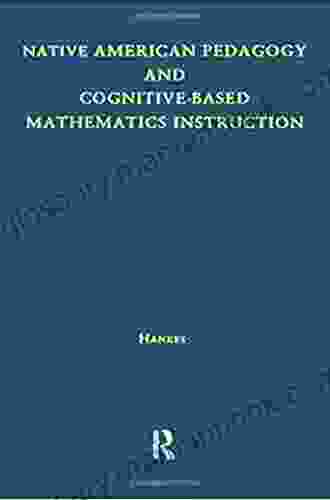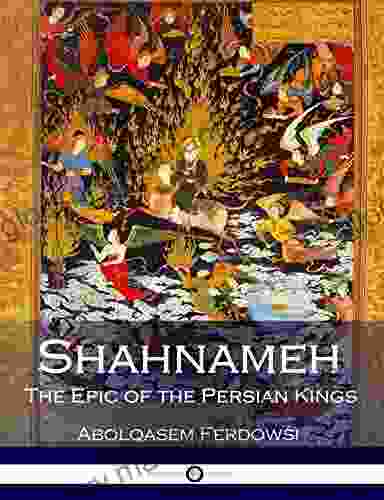Native American Pedagogy and Cognitive-Based Mathematics Instruction: A Comprehensive Exploration

Native American pedagogy, rooted in centuries-old traditions and cultural beliefs, offers a rich and distinct approach to education that has the potential to enhance student learning in a variety of subjects, including mathematics. Cognitive-based mathematics instruction, on the other hand, emphasizes the development of higher-order thinking skills and problem-solving abilities. By combining the strengths of both approaches, educators can create a dynamic and culturally responsive learning environment that fosters deep understanding and intellectual growth.
Traditional Native American education was closely tied to the community and the environment. Learning occurred through observation, imitation, and hands-on experiences. Children were encouraged to learn from their elders, who shared their knowledge and wisdom about hunting, fishing, farming, and other important aspects of life. This holistic approach to education emphasized the interconnectedness of all things and the importance of respecting the natural world.
In the late 19th and early 20th centuries, Native American education was forcibly disrupted by the United States government's assimilationist policies. Native American children were sent to boarding schools, where they were subjected to harsh discipline and forbidden from speaking their native languages or practicing their traditional customs. This traumatic experience had a lasting impact on generations of Native American students.
4.7 out of 5
| Language | : | English |
| File size | : | 9966 KB |
| Text-to-Speech | : | Enabled |
| Screen Reader | : | Supported |
| Enhanced typesetting | : | Enabled |
| Word Wise | : | Enabled |
| Print length | : | 168 pages |
In recent decades, there has been a growing movement to revitalize Native American education and to incorporate traditional teachings into contemporary classrooms. This movement has been fueled by the recognition that Native American students have unique learning styles and that their cultural perspectives can be a valuable asset in the learning process.
Native American pedagogy is based on a number of key principles, including:
- Respect for the individual: Native American teachers believe that each student is a unique individual with their own strengths and weaknesses. They strive to create a supportive learning environment where all students feel valued and respected.
- Holistic learning: Native American pedagogy emphasizes the interconnectedness of all things. Students are encouraged to learn about the world through multiple perspectives and to make connections between different subjects.
- Experiential learning: Native American teachers believe that students learn best by ng. They incorporate hands-on activities, field trips, and other experiential learning opportunities into their lessons.
- Community involvement: Native American education is closely tied to the community. Elders, parents, and other community members are often involved in the learning process, sharing their knowledge and wisdom with students.
Cognitive-based mathematics instruction is an approach to teaching mathematics that emphasizes the development of higher-order thinking skills and problem-solving abilities. This approach is based on the belief that students learn mathematics best when they are actively engaged in the learning process and when they are challenged to think critically about mathematical concepts.
Cognitive-based mathematics instruction typically includes the following components:
- Problem-solving: Students are presented with open-ended problems that require them to use their critical thinking skills to find solutions.
- Reasoning: Students are encouraged to explain their thinking and to provide evidence to support their answers.
- Communication: Students are given opportunities to share their mathematical ideas with others, both orally and in writing.
By integrating the principles of Native American pedagogy into cognitive-based mathematics instruction, educators can create a dynamic and culturally responsive learning environment that fosters deep understanding and intellectual growth. Some specific ways to integrate these two approaches include:
- Using storytelling to introduce mathematical concepts: Storytelling is a powerful way to engage students and to make learning more meaningful. Native American teachers can use storytelling to introduce new mathematical concepts and to illustrate how these concepts can be applied in real-world situations.
- Incorporating hands-on activities into lessons: Hands-on activities are a great way for students to learn about mathematical concepts in a concrete way. Native American teachers can incorporate hands-on activities into their lessons to help students develop a deeper understanding of mathematics.
- Encouraging students to work cooperatively: Cooperative learning activities are a valuable way to help students learn from each other and to develop their problem-solving skills. Native American teachers can encourage students to work cooperatively on mathematical tasks, such as solving problems or creating projects.
- Involving elders and community members in the learning process: Elders and community members have a wealth of knowledge and wisdom to share with students. Native American teachers can invite elders and community members to visit their classrooms and share their knowledge about mathematics and other aspects of Native American culture.
Integrating Native American pedagogy and cognitive-based mathematics instruction offers a number of benefits for students, including:
- Increased student engagement: Native American pedagogy emphasizes the importance of making learning relevant and meaningful to students. By incorporating Native American perspectives and traditions into mathematics instruction, teachers can make learning more engaging and motivating for students.
- Improved student understanding: Cognitive-based mathematics instruction emphasizes the development of higher-order thinking skills and problem-solving abilities. By integrating cognitive-based mathematics instruction into their lessons, Native American teachers can help students develop a deeper understanding of mathematics.
- Increased cultural sensitivity: Native American pedagogy is rooted in the beliefs and values of Native American cultures. By incorporating Native American pedagogy into their classrooms, teachers can help students develop a greater understanding and appreciation of Native American cultures.
- Improved student achievement: Research has shown that students who are taught using Native American pedagogy and cognitive-based mathematics instruction achieve higher levels of academic success.
Native American pedagogy and cognitive-based mathematics instruction are two powerful approaches to education that can be combined to create a dynamic and culturally responsive learning environment. By integrating the principles of Native American pedagogy into cognitive-based mathematics instruction, educators can create a learning environment that is both engaging and effective. This approach can help students develop a deeper understanding of mathematics, improve their problem-solving skills, and develop a greater appreciation for Native American cultures.
4.7 out of 5
| Language | : | English |
| File size | : | 9966 KB |
| Text-to-Speech | : | Enabled |
| Screen Reader | : | Supported |
| Enhanced typesetting | : | Enabled |
| Word Wise | : | Enabled |
| Print length | : | 168 pages |
Do you want to contribute by writing guest posts on this blog?
Please contact us and send us a resume of previous articles that you have written.
 Top Book
Top Book Novel
Novel Fiction
Fiction Nonfiction
Nonfiction Literature
Literature Paperback
Paperback Hardcover
Hardcover E-book
E-book Audiobook
Audiobook Bestseller
Bestseller Classic
Classic Mystery
Mystery Thriller
Thriller Romance
Romance Fantasy
Fantasy Science Fiction
Science Fiction Biography
Biography Memoir
Memoir Autobiography
Autobiography Poetry
Poetry Drama
Drama Historical Fiction
Historical Fiction Self-help
Self-help Young Adult
Young Adult Childrens Books
Childrens Books Graphic Novel
Graphic Novel Anthology
Anthology Series
Series Encyclopedia
Encyclopedia Reference
Reference Guidebook
Guidebook Textbook
Textbook Workbook
Workbook Journal
Journal Diary
Diary Manuscript
Manuscript Folio
Folio Pulp Fiction
Pulp Fiction Short Stories
Short Stories Fairy Tales
Fairy Tales Fables
Fables Mythology
Mythology Philosophy
Philosophy Religion
Religion Spirituality
Spirituality Essays
Essays Critique
Critique Commentary
Commentary Glossary
Glossary Bibliography
Bibliography Index
Index Table of Contents
Table of Contents Preface
Preface Introduction
Introduction Foreword
Foreword Afterword
Afterword Appendices
Appendices Annotations
Annotations Footnotes
Footnotes Epilogue
Epilogue Prologue
Prologue Andrea Mckenzie Raine
Andrea Mckenzie Raine Kassandra Flamouri
Kassandra Flamouri Uncle Sam
Uncle Sam Jerzy Duda
Jerzy Duda Barbara Casey
Barbara Casey Carolyn Boyes Watson
Carolyn Boyes Watson Bern Dean
Bern Dean Mark Berry
Mark Berry Lori Covington
Lori Covington Lucy Tempest
Lucy Tempest Karel Capek
Karel Capek Stephen V Geddes
Stephen V Geddes Pat Crissey
Pat Crissey Michael L Wehmeyer
Michael L Wehmeyer Deandre Dean
Deandre Dean Nicholas J C Pistor
Nicholas J C Pistor Abhijit V Banerjee
Abhijit V Banerjee Sugata Mitra
Sugata Mitra Isaac M Hamm Iii
Isaac M Hamm Iii John Piper
John Piper
Light bulbAdvertise smarter! Our strategic ad space ensures maximum exposure. Reserve your spot today!
 Noah BlairFollow ·19.7k
Noah BlairFollow ·19.7k Roger TurnerFollow ·19.5k
Roger TurnerFollow ·19.5k Cason CoxFollow ·16.6k
Cason CoxFollow ·16.6k Truman CapoteFollow ·5.4k
Truman CapoteFollow ·5.4k Franklin BellFollow ·5.9k
Franklin BellFollow ·5.9k Emanuel BellFollow ·5.5k
Emanuel BellFollow ·5.5k Douglas PowellFollow ·13.9k
Douglas PowellFollow ·13.9k Stuart BlairFollow ·18.3k
Stuart BlairFollow ·18.3k

 Cody Blair
Cody BlairWill You Ever Pee Alone Again? The Future of Bathroom...
The bathroom has long been a place of...

 Al Foster
Al FosterNine Years Among the Indians 1870-1879: Witnessing Their...
In the annals of American...

 Pete Blair
Pete BlairYekl and the Imported Bridegroom: A Window into the New...
Abraham Cahan's Yekl and the...

 Pablo Neruda
Pablo NerudaSearch Engine Optimization Guide: A Non-Technical...
In today's digital landscape, having a...

 Nikolai Gogol
Nikolai GogolOne Piece Vol 77: Smile - The Saga Continues with...
The Enthralling World...

 Dan Henderson
Dan HendersonThree Farmers On Their Way To Dance
In a quaint countryside...
4.7 out of 5
| Language | : | English |
| File size | : | 9966 KB |
| Text-to-Speech | : | Enabled |
| Screen Reader | : | Supported |
| Enhanced typesetting | : | Enabled |
| Word Wise | : | Enabled |
| Print length | : | 168 pages |










